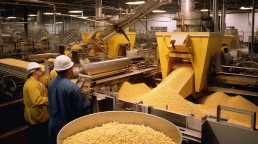Chemical Spectroscopy to Help Detect Mercury
It has also recently been discovered through biogeochemical research that deep-sea-feeding fish contain more mercury than fish that feed closer to the surface. Scientists have also determined that chemical reactions of sunlight help destroy the mercury in the well-lit upper depths of water. Using a spectrometer or spectrophotometer, the amount of mercury was measured in a variety of species that fed at different depths of the ocean.
Continuing mercury research using spectroscopy and chemical analysis will help oceanographers learn more about the differing mercury levels within the ocean. It will also keep the fishing industry informed about unsafe mercury concentrations in certain areas or certain species of fish. This research has already helped scientists predict that mercury concentrations in fish from the Pacific Ocean will be on the rise in the coming years. Knowing this can assist food regulators in adjusting the guidelines for safe amounts of consumption over the next few decades.










